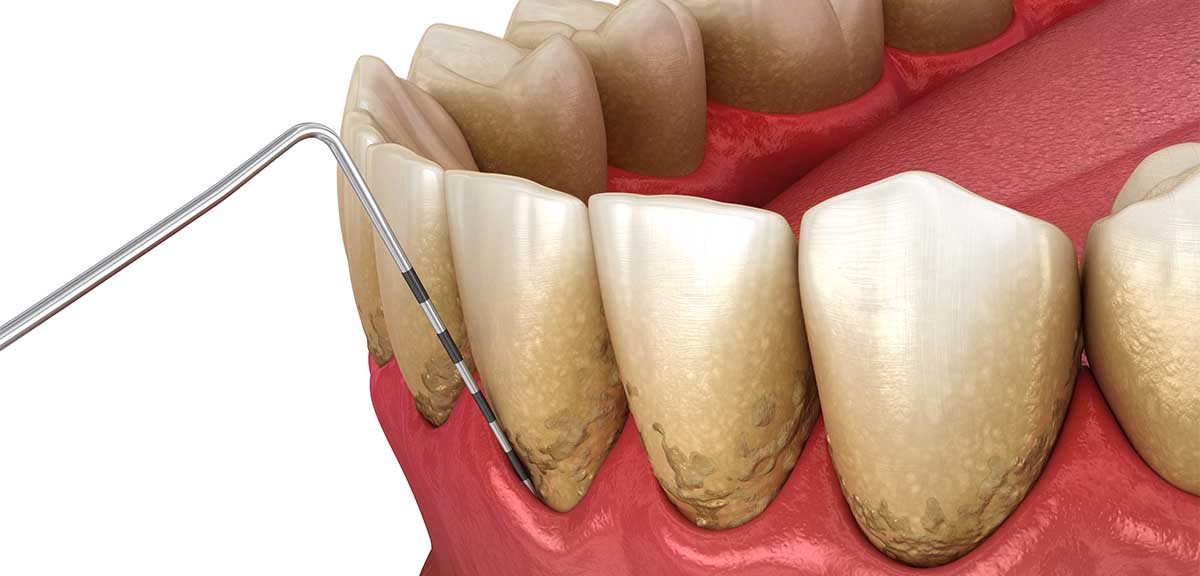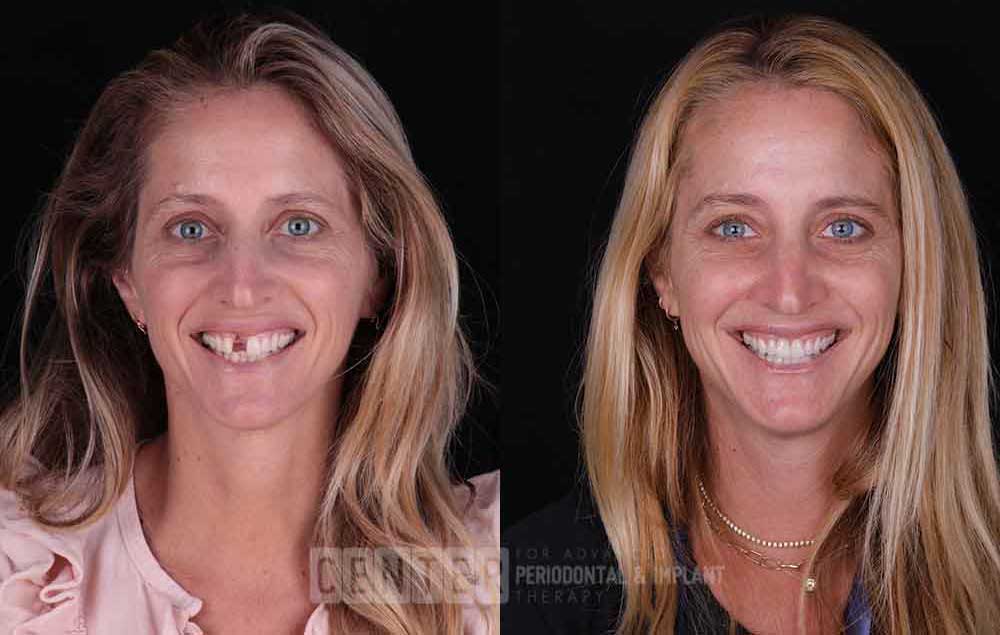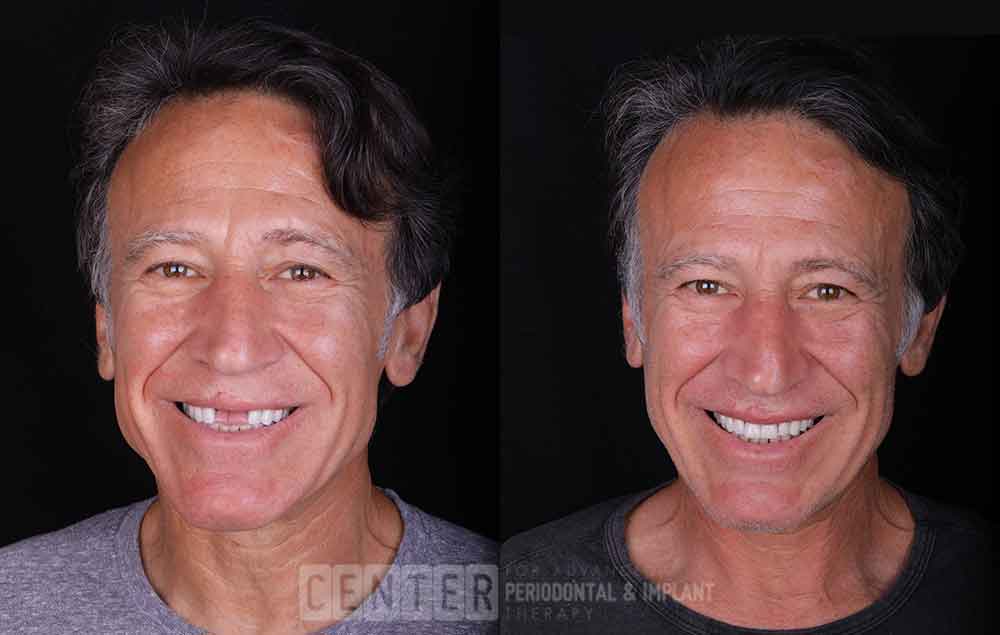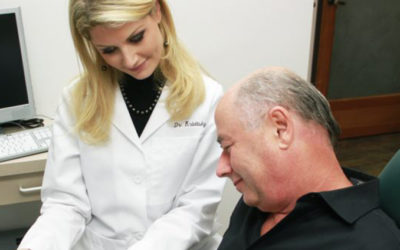Options For Saving A Tooth Before You Replace It
Thinking of having a tooth pulled because of decay or an abscess? Maybe there’s severe bone loss because of periodontal disease? Even though a dental implant is one of the best replacement options for a missing tooth, our Los Angeles dentist recommends preserving natural teeth whenever possible.
Depending on what your smile has gone through and if other teeth are missing, here are some of the best options you have to preserve your natural teeth.
Gum Disease Treatment Options
Gum disease (periodontal disease) is an infection where the gums detach from your teeth, and bone loss weakens the integrity of your tooth. Over time, symptoms of mild gingivitis can progress into more prevalent stages of gum disease, including:
- Loose or missing teeth
- Bleeding gums
- Inflammation
- Bad breath
- Tartar buildup
- Spaces between teeth
- Gum “pockets” between the tooth root and gum tissues
Treatment for gum disease usually consists of a series of periodontal scaling and root planning appointments (“deep cleanings“) to remove the source of infection. If there is severe bone loss, bone grafting can also be performed to stabilize more at-risk areas of your mouth. Most deep cleanings are spaces over at least two appointments, cleaning half of your mouth at each visit. Our dentist may even recommend using local anesthesia to keep you as comfortable as possible.
By removing the bacterial plaque and tartar (calculus) deposits around your tooth roots, we can halt the source of your gum disease and reduce your risk of tooth loss. Even if oral health problems have always run in your family, access to preventative care and alternative procedures reduce the chances of missing teeth in today’s dental patients.
Preserving your natural teeth with deep cleanings or bone grafting isn’t just good for your smile. It also has to do with your overall health. You see, bacterial plaque can spread from an infected tooth into your bloodstream, then lodge itself in arterial walls, your heart, or around the brain. Untreated, periodontal infections can statistically raise your risk of heart attack, stroke, pneumonia, diabetes, infertility, and many other health concerns. But eliminating your oral infection reduces strain to your immune system and the spread of bacteria, boosting your health overall.

Root Canal Therapy and Dental Crown
Any time tooth decay reaches into the nerve of the tooth (which extends into the root), it’s no longer possible to repair the cavity with a filling. Or even a crown. Instead, root canal therapy is a must. Root canal treatment eliminates the infected pulp, and root canals are thoroughly cleaned then sealed off. This process halts the source of infection and pain. Rest assured, today’s root canals are much more comfortable than most people expect! By saving a tooth with this predictable, gentle procedure, you can avoid an extraction and future tooth replacement.
After you get a root canal, you’ll also need to place a crown over the treated tooth. The dentist will craft the crown to blend in with the rest of your mouth, so that it doesn’t stand out from other teeth. Root canal treated teeth tend to be more brittle than others, so a crown helps prolong its function in the years ahead. The total procedure will likely require at least two appointments.
Most people assume that it’s easiest to have abscessed teeth extracted by their dentist. But in reality, a root canal is the best plan of care. When you understand that your treatment plan is to limit the need for additional treatments, it will help you feel more confident about future dental care.
When to Get a Tooth Extraction
When you have severe tooth decay, and there isn’t enough tooth structure to repair, having the tooth pulled prevents further infection and deterioration. That way, we eliminate the risk to other teeth. A mildly decayed tooth can usually be repaired with a filling, onlay/inlay, or crown. But if there is serious disease that’s left untreated, there is ultimately a point where it is no longer possible to save your tooth.
Advanced periodontal disease is another common reason to remove a real tooth. At this stage of infection, your gums are severely detached, receded, and large “pockets” have developed around the roots of your teeth. There may also be heavy tartar buildup between the tooth and gums, contributing to bone loss. If we cannot save a tooth with bone grafting or periodontal cleanings, therapeutic tooth extraction is best to prevent the spread of disease.
Removing a problem tooth isn’t always the best option, but we do recommend an extraction if there are limited choices available. Especially if you’re in pain or plan on replacing multiple other teeth at the same time.


Dental Implants to Replace Missing Teeth
If it’s necessary to have a tooth extracted, it’s important to replace the entire tooth in a timely manner. Otherwise, adjacent healthy teeth will start to shift into the space of the extracted tooth. The ideal tooth replacement is a dental implant since implants mirror natural teeth. The single implant and affixed restoration will function exactly like a natural tooth structure, allowing you to chew and smile with confidence.
Plus, dental implants are not invasive to surrounding teeth. This makes implants a preferred tooth replacement over options like partial dentures or a fixed dental bridge. They reduce the risk of bone loss, saving teeth as they replace the missing tooth. With good oral hygiene, you can expect your new implant “tooth” to last just as long as your own teeth, if not even longer.
Restorative Dentistry and Implants in Los Angeles
The Center for Advanced Periodontal & Implant Therapy in Los Angeles offers comprehensive options to preserve your natural teeth. Whether you require periodontal care (like scaling and root planing) or therapeutic tooth extraction, our specialists can help. With dental implants, you can smile again with confidence, knowing you’ll have a restoration that performs just like a natural tooth. Contact our dental specialists in Los Angeles today to request a no-obligation evaluation.
You May Also Like...
Understanding the Microbiome of the Mouth: Why Balance Matters for Gum Health
We often think of brushing, flossing, and regular cleanings as the cornerstones of oral health. But beneath these...
The Real Cure for Periodontitis: Dispelling Myths About Gum Disease Treatment
Periodontitis, commonly known as gum disease, has long been regarded as a chronic condition that can only be managed,...
Senior Periodontal Care and the Challenges Aging Presents
As we journey through the stages of life, there's one aspect that demands consistent consideration — our oral health....



